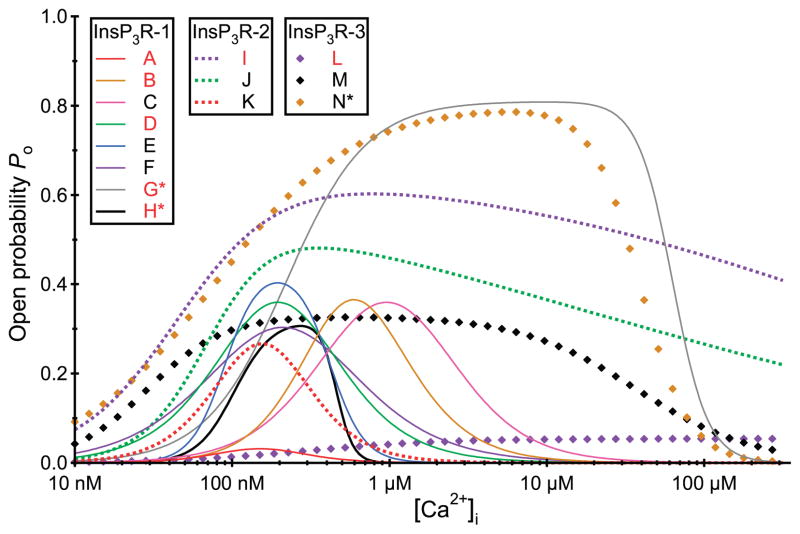FIG. 8.
[Ca2+]i dependence of vertebrate InsP3R channel activity in saturating [InsP3] observed in various single-channel studies. Biphasic Hill equation curves shown are generated either using parameters provided by studies cited below, or by fitting data provided in those studies with the Hill equation. Entries denoted by red letters are data from endogenously expressed InsP3R channels; other entries denoted by black letters are from recombinant homotetrameric InsP3R channels. Entries marked with asterisks are obtained by nuclear patch-clamp experiments; others are from InsP3R channels reconstituted into planar lipid bilayers. All data were observed in the presence of 0.5–1 mM Na2 ATP on the cytoplasmic side of the channel unless stated otherwise. A: canine cerebellar (438). B: bovine cerebellar in 0 ATP (382). C: rat type 1 SI+ SII+ in COS cells in 0 ATP (381). D: rat cerebellar (478). E: rat type 1 SI− SII+ in Sf9 cells (478). F: rat type 1 SI− SII+ in Sf9 cells (479). G: Xenopus oocyte (282). H: rat cerebellar (294). I: ferret cardiac ventricular myocyte in 0 ATP (382). J: rat type 2 in COS cells in 0 ATP (380). K: rat type 2 in Sf9 cells (481). L: rat pancreatic RIN-m5F cells (163). M: rat type 3 in Sf9 cells in 5 mM Na2ATP (481). N: rat type 3 in Xenopus oocytes (283).

